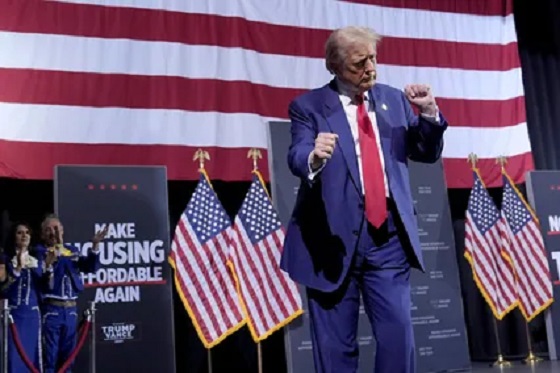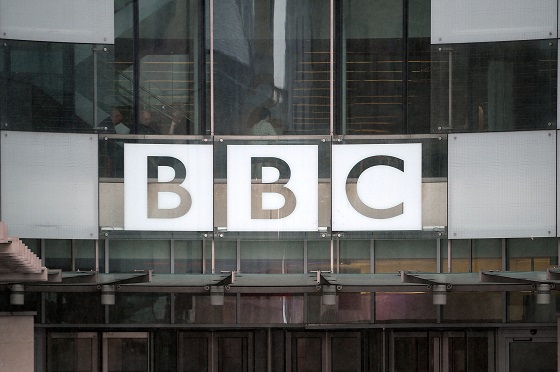Brownstone Institute
Information Disorder Syndrome

From the Brownstone Institute
By
Information disorder is a term coined in 2017 in a report titled “Information Disorder Toward an interdisciplinary framework for research and policymaking” that was drafted for the Council of Europe. (Derakhshan & Hossein, 2017). Information disorder refers to the sharing or developing of false information, categorized as misinformation, disinformation, and malinformation. Of interest, the original 2016 election of President Trump triggered the commission of this report.
From the report:

This concept has been further developed by think tanks, academics, NGOs, governments, and others now invested in the vast fact-checking and industrial-censorship complex. We have all become well-versed in these concepts over the past few years.
A 2020 peer-reviewed study took this concept further and made information disorder into a mental health condition.

Abstract:
Many of us may be unknowingly suffering from information disorder syndrome. It is more prevalent due to the digitized world where the information flows to every individual’s phone, tablet and computer in no time. Information disorder syndrome is the sharing or developing of false information with or without the intent of harming and they are categorized as misinformation, disinformation and malinformation.
The severity of the syndrome is categorized into three grades. Grade 1 is a milder form in which the individual shares false information without the intent of harming others. Grade 2 is a moderate form in which the individual develops and shares false information with the intent of making money and political gain, but not with the intent of harming people. Grade 3 is a severe form in which the individual develops and shares false information with the intent of harming others.
The management of this disorder requires the management of false information, which is rumor surveillance, targeted messaging and community engagement.
Repeated sufferers at the Grade 1 level, all sufferers from Grade 2 and 3 levels need psycho-social counseling and sometimes require strong regulations and enforcement to control such information disorder.
The most critical intervention is to be mindful of the fact that not all posts in social media and news are real, and need to be interpreted carefully.
From this paper, the idea of “information disorder syndrome” quickly jumped into the lexicon of both the censorship-industrial complex and the mental health industry. It is important to note that the terms syndrome, disease, and mental disorders are often used interchangeably. In this case, it has been determined by organizations such as First Draft and the Aspen Institute that the way to cure this syndrome is to stop the flow of misinformation, disinformation, and malinformation online.

Is it just a matter of time before the American Psychiatric Association puts this new “syndrome” into the next edition of the Diagnostic and Statistical Manual of Mental Disorders (DSM)?
Is this a possibility?
The American Psychological Association is at least considering how to fit “information disorder” or even “information disorder syndrome” into their modalities. The APA has developed a consensus statement report on fighting health misinformation, which we taxpayers paid for. The CDC paid the APA $2 million for this project.

Next up will be the National Institute of Mental Health (NIMH) developing a funding program to research how to cure or manage this new mental health disorder; considered a new syndrome because of the pernicious tendrils of the internet.
As information disorder syndrome is not a formally recognized mental health condition yet, so far, specific NIMH funding has been absent. However, suppose information disorder syndrome continues to evolve by the medical establishment into a mental health condition. In that case, it is conceivable that NIMH could support studies in the future, particularly for the “sufferers from grade 2 and 3 levels who need psycho-social counseling and sometimes require strong regulations and enforcement to control such information disorder.”
This is yet another example of how the government can and has previously exerted control over individuals. What happens when the APA stigmatizes people who have contrarian views or lifestyles or posts mis, dis or mal-information repeatedly online? The APA has a long history of discriminating and labeling categories of people who differ from the norm, such as when being gay became a mental health disorder in the 1950s.
This lasted for decades, and the APA endorsed many medical treatments such as surgical interventions, including castrations, vasectomies, hysterectomies, and lobotomies, drug therapies (including aversion therapy, which included inducing nausea, vomiting, or paralysis when exposed to same-sex erotic images or thoughts) and even chemical castration, sexual depressants and stimulants, LSD, estrogen and testosterone and also electroconvulsive therapy—which involved administering electric shocks to patients.
Taking this back to the topic at hand, making information disorder a syndrome affecting the individual allows the state through the medical and insurance industries to step in and force the individual to conform to societal norms. As shown in the example above, this is within the realm of possibilities.
Is this a future that is going to happen? Who knows, but it could. And we have to be prepared for this future manifesting in various planning stages. This is why terms such as “information disorder” and “information disorder syndrome” are being propagated throughout new media and must be rejected at all levels.
”Free speech is the most pragmatic tool we have for ascertaining truth. Only by examining all sides of an issue can the truth be chiseled out like a statue out of marble. But the underlying reality is that there can be many truths; we each have our own experiences, values, mores, and life. That is the beauty and wonder of being an individual. There can be no free speech without free and open access to ideas, knowledge, truths, and untruths. Without free speech, we are little more than slaves.
We must defend all speech—whether untrue, hateful, or intolerable, as that is the only way to protect our rights and abilities to understand the world. As soon as free speech is restricted, that restriction will be used to sway public opinion. As soon as one person can be defined as a heretic for uttering words, then soon everyone opposing the “officially approved” side of an issue will be labeled as a heretic. The next logical step will be for the state to define acts of heresy as criminal offenses. As soon as governments and those in power can sway public opinion by restricting free speech, democracy and even our republic of United States will be lost.”
Republished from the author’s Substack
Brownstone Institute
Bizarre Decisions about Nicotine Pouches Lead to the Wrong Products on Shelves

From the Brownstone Institute
A walk through a dozen convenience stores in Montgomery County, Pennsylvania, says a lot about how US nicotine policy actually works. Only about one in eight nicotine-pouch products for sale is legal. The rest are unauthorized—but they’re not all the same. Some are brightly branded, with uncertain ingredients, not approved by any Western regulator, and clearly aimed at impulse buyers. Others—like Sweden’s NOAT—are the opposite: muted, well-made, adult-oriented, and already approved for sale in Europe.
Yet in the United States, NOAT has been told to stop selling. In September 2025, the Food and Drug Administration (FDA) issued the company a warning letter for offering nicotine pouches without marketing authorization. That might make sense if the products were dangerous, but they appear to be among the safest on the market: mild flavors, low nicotine levels, and recyclable paper packaging. In Europe, regulators consider them acceptable. In America, they’re banned. The decision looks, at best, strange—and possibly arbitrary.
What the Market Shows
My October 2025 audit was straightforward. I visited twelve stores and recorded every distinct pouch product visible for sale at the counter. If the item matched one of the twenty ZYN products that the FDA authorized in January, it was counted as legal. Everything else was counted as illegal.
Two of the stores told me they had recently received FDA letters and had already removed most illegal stock. The other ten stores were still dominated by unauthorized products—more than 93 percent of what was on display. Across all twelve locations, about 12 percent of products were legal ZYN, and about 88 percent were not.
The illegal share wasn’t uniform. Many of the unauthorized products were clearly high-nicotine imports with flashy names like Loop, Velo, and Zimo. These products may be fine, but some are probably high in contaminants, and a few often with very high nicotine levels. Others were subdued, plainly meant for adult users. NOAT was a good example of that second group: simple packaging, oat-based filler, restrained flavoring, and branding that makes no effort to look “cool.” It’s the kind of product any regulator serious about harm reduction would welcome.
Enforcement Works
To the FDA’s credit, enforcement does make a difference. The two stores that received official letters quickly pulled their illegal stock. That mirrors the agency’s broader efforts this year: new import alerts to detain unauthorized tobacco products at the border (see also Import Alert 98-06), and hundreds of warning letters to retailers, importers, and distributors.
But effective enforcement can’t solve a supply problem. The list of legal nicotine-pouch products is still extremely short—only a narrow range of ZYN items. Adults who want more variety, or stores that want to meet that demand, inevitably turn to gray-market suppliers. The more limited the legal catalog, the more the illegal market thrives.
Why the NOAT Decision Appears Bizarre
The FDA’s own actions make the situation hard to explain. In January 2025, it authorized twenty ZYN products after finding that they contained far fewer harmful chemicals than cigarettes and could help adult smokers switch. That was progress. But nine months later, the FDA has approved nothing else—while sending a warning letter to NOAT, arguably the least youth-oriented pouch line in the world.
The outcome is bad for legal sellers and public health. ZYN is legal; a handful of clearly risky, high-nicotine imports continue to circulate; and a mild, adult-market brand that meets European safety and labeling rules is banned. Officially, NOAT’s problem is procedural—it lacks a marketing order. But in practical terms, the FDA is punishing the very design choices it claims to value: simplicity, low appeal to minors, and clean ingredients.
This approach also ignores the differences in actual risk. Studies consistently show that nicotine pouches have far fewer toxins than cigarettes and far less variability than many vapes. The biggest pouch concerns are uneven nicotine levels and occasional traces of tobacco-specific nitrosamines, depending on manufacturing quality. The serious contamination issues—heavy metals and inconsistent dosage—belong mostly to disposable vapes, particularly the flood of unregulated imports from China. Treating all “unauthorized” products as equally bad blurs those distinctions and undermines proportional enforcement.
A Better Balance: Enforce Upstream, Widen the Legal Path
My small Montgomery County survey suggests a simple formula for improvement.
First, keep enforcement targeted and focused on suppliers, not just clerks. Warning letters clearly change behavior at the store level, but the biggest impact will come from auditing distributors and importers, and stopping bad shipments before they reach retail shelves.
Second, make compliance easy. A single-page list of authorized nicotine-pouch products—currently the twenty approved ZYN items—should be posted in every store and attached to distributor invoices. Point-of-sale systems can block barcodes for anything not on the list, and retailers could affirm, once a year, that they stock only approved items.
Third, widen the legal lane. The FDA launched a pilot program in September 2025 to speed review of new pouch applications. That program should spell out exactly what evidence is needed—chemical data, toxicology, nicotine release rates, and behavioral studies—and make timely decisions. If products like NOAT meet those standards, they should be authorized quickly. Legal competition among adult-oriented brands will crowd out the sketchy imports far faster than enforcement alone.
The Bottom Line
Enforcement matters, and the data show it works—where it happens. But the legal market is too narrow to protect consumers or encourage innovation. The current regime leaves a few ZYN products as lonely legal islands in a sea of gray-market pouches that range from sensible to reckless.
The FDA’s treatment of NOAT stands out as a case study in inconsistency: a quiet, adult-focused brand approved in Europe yet effectively banned in the US, while flashier and riskier options continue to slip through. That’s not a public-health victory; it’s a missed opportunity.
If the goal is to help adult smokers move to lower-risk products while keeping youth use low, the path forward is clear: enforce smartly, make compliance easy, and give good products a fair shot. Right now, we’re doing the first part well—but failing at the second and third. It’s time to fix that.
Addictions
The War on Commonsense Nicotine Regulation

From the Brownstone Institute
Cigarettes kill nearly half a million Americans each year. Everyone knows it, including the Food and Drug Administration. Yet while the most lethal nicotine product remains on sale in every gas station, the FDA continues to block or delay far safer alternatives.
Nicotine pouches—small, smokeless packets tucked under the lip—deliver nicotine without burning tobacco. They eliminate the tar, carbon monoxide, and carcinogens that make cigarettes so deadly. The logic of harm reduction couldn’t be clearer: if smokers can get nicotine without smoke, millions of lives could be saved.
Sweden has already proven the point. Through widespread use of snus and nicotine pouches, the country has cut daily smoking to about 5 percent, the lowest rate in Europe. Lung-cancer deaths are less than half the continental average. This “Swedish Experience” shows that when adults are given safer options, they switch voluntarily—no prohibition required.
In the United States, however, the FDA’s tobacco division has turned this logic on its head. Since Congress gave it sweeping authority in 2009, the agency has demanded that every new product undergo a Premarket Tobacco Product Application, or PMTA, proving it is “appropriate for the protection of public health.” That sounds reasonable until you see how the process works.
Manufacturers must spend millions on speculative modeling about how their products might affect every segment of society—smokers, nonsmokers, youth, and future generations—before they can even reach the market. Unsurprisingly, almost all PMTAs have been denied or shelved. Reduced-risk products sit in limbo while Marlboros and Newports remain untouched.
Only this January did the agency relent slightly, authorizing 20 ZYN nicotine-pouch products made by Swedish Match, now owned by Philip Morris. The FDA admitted the obvious: “The data show that these specific products are appropriate for the protection of public health.” The toxic-chemical levels were far lower than in cigarettes, and adult smokers were more likely to switch than teens were to start.
The decision should have been a turning point. Instead, it exposed the double standard. Other pouch makers—especially smaller firms from Sweden and the US, such as NOAT—remain locked out of the legal market even when their products meet the same technical standards.
The FDA’s inaction has created a black market dominated by unregulated imports, many from China. According to my own research, roughly 85 percent of pouches now sold in convenience stores are technically illegal.
The agency claims that this heavy-handed approach protects kids. But youth pouch use in the US remains very low—about 1.5 percent of high-school students according to the latest National Youth Tobacco Survey—while nearly 30 million American adults still smoke. Denying safer products to millions of addicted adults because a tiny fraction of teens might experiment is the opposite of public-health logic.
There’s a better path. The FDA should base its decisions on science, not fear. If a product dramatically reduces exposure to harmful chemicals, meets strict packaging and marketing standards, and enforces Tobacco 21 age verification, it should be allowed on the market. Population-level effects can be monitored afterward through real-world data on switching and youth use. That’s how drug and vaccine regulation already works.
Sweden’s evidence shows the results of a pragmatic approach: a near-smoke-free society achieved through consumer choice, not coercion. The FDA’s own approval of ZYN proves that such products can meet its legal standard for protecting public health. The next step is consistency—apply the same rules to everyone.
Combustion, not nicotine, is the killer. Until the FDA acts on that simple truth, it will keep protecting the cigarette industry it was supposed to regulate.
-

 armed forces1 day ago
armed forces1 day agoIt’s time for Canada to remember, the heroes of Kapyong
-

 Daily Caller2 days ago
Daily Caller2 days agoMcKinsey outlook for 2025 sharply adjusts prior projections, predicting fossil fuels will dominate well after 2050
-

 Business2 days ago
Business2 days agoTrump: Americans to receive $2,000 each from tariff revenue
-

 Business1 day ago
Business1 day agoCarney’s Floor-Crossing Campaign. A Media-Staged Bid for Majority Rule That Erodes Democracy While Beijing Hovers
-

 Housing2 days ago
Housing2 days agoTrump advancing 50-year mortgage to help more Americans buy homes
-

 Business17 hours ago
Business17 hours agoLiberals refuse to disclose the amount of taxpayer dollars headed to LGBT projects in foreign countries
-

 International2 days ago
International2 days agoBBC boss quits amid scandal over edited Trump footage
-

 Daily Caller9 hours ago
Daily Caller9 hours agoUS Nuclear Bomber Fleet Shares Fence With Trailer Park Linked To Chinese Intel-Tied Fraudster












